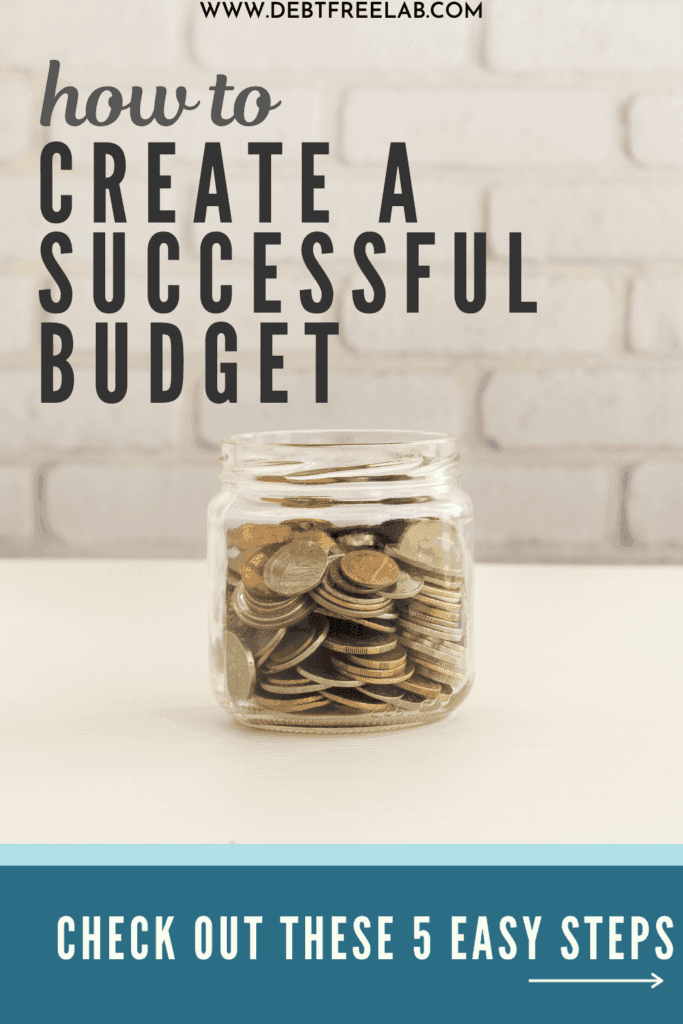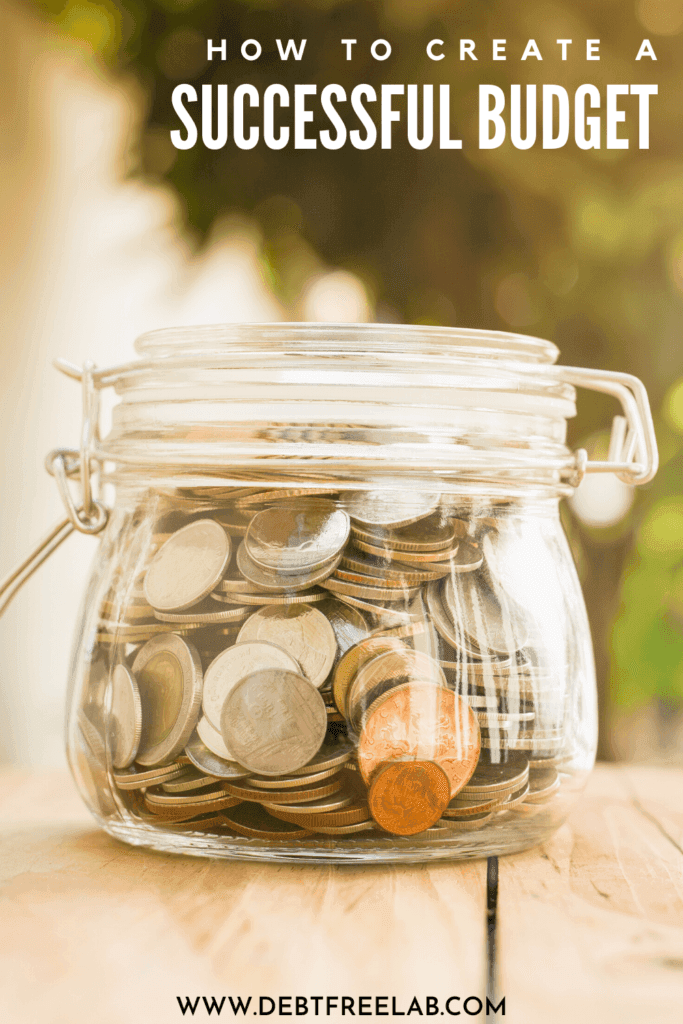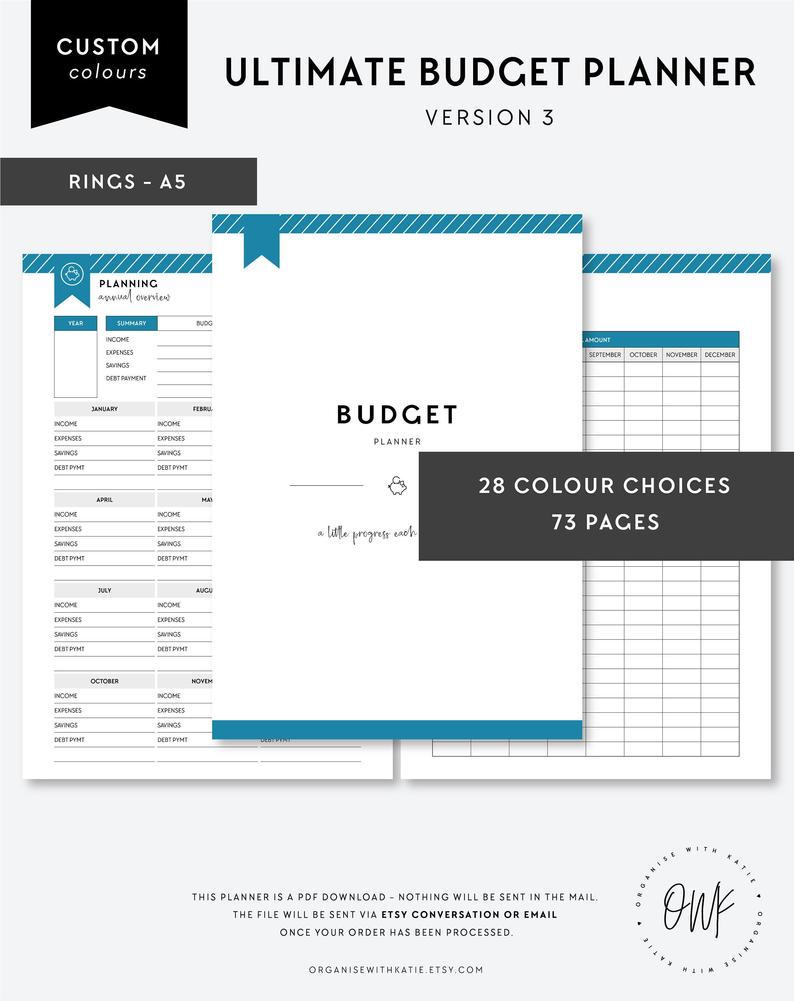
How to Create a Successful Personal Budget in 5 Steps
Creating a budget for the first time may seem daunting, especially if you don’t know where to start. Here’s how to create a personal budget simply and effectively in only 5 steps!
This post may contain affiliate links, which means I may earn a small commission at no extra cost to you. For more information, please see my disclosure here. Thank you for your support!
Preparing a budget for the first time can be intimidating. It definitely was for me. I didn’t know how to create a personal budget, let alone making it work.
However, by following these 5 super easy steps, your budget can be up and running in no time!
Step 1: Decide what your goal is
I always recommend having a clear goal in mind when starting any kind of endeavor.
The same principle applies to creating a personal budget.

When you’re clear on what you want to get out of your budget, it’ll be easier to maintain and stick with it, even when you start getting discouraged.
So what do you want out of your budget? Is it having more control over your finances? Knowledge of where your money is going each month? Identifying room for savings?
Whatever it is, decide on one or two things.
If possible, write them down and post them near your laptop or wherever you plan to regularly sit down to do your budget.
Think of it as future motivation for yourself. On those days when budgeting feels super tedious, you’ll see your goals and remember why you’re doing it!
My motivation to start budgeting was to save for an emergency fund.
I had just gone through a health scare, and I realized I was avoiding going to the hospital, even though I really needed to, just because I didn’t have the money to pay for it.
That did it for me.
After I got back home from the hospital (yes, I finally went), I was determined to change my financial situation for good. So I started learning as much as I could about finances and budgeting, and I got started.
I taped the hospital bill to my desk so I could remember that I never again wanted to feel like I needed to jeopardize my health because of money.
Step 2: Gather Intel
The next step to create a personal budget for the first time is to gather information.
The easiest way to do this is to download your credit card and bank statements for the past several months. Remember to grab the statements for all your accounts so you can have a complete picture.
I recommend tracking your spending and your income for a month or two before attempting to create your personal budget.
This will give you a starting point of what your expenses really are each month. This is important since we tend to underestimate how much we spend.
You can also use a spending tracking app like Mint, which downloads up to three months of data when you first sign up with it, and categorize the expenses directly onto the app.
What if you don’t have historical data?
In case you can’t get this data, spend a couple of months tracking your expenses. Find a system that works for you and your spending habits.
If you mostly pay for purchases with a card, then an app like Mint could work for you. If you pay cash for a lot of purchases, then an app like the Spending Tracker may work better.
You may also go the old-fashioned way and record everything on paper.
If you go this route, I recommend using a Budget Planner. I personally like this one because of its colorful pages and ease of use. Give it a try and let me know if you like it!
Whatever you use, this phase may require some trial and error as you find what works for you.
Remember that the system that will work is the system you’ll be able to stick to. As much as you may love one app over the other, if you don’t use it, it will be completely useless.
Step 3: Analyze the Data
Once you’ve tracked your income and expenses for a couple of months, it’s time to analyze the data you’ve gathered.
In this step, you should be able to answer questions such as:
How much money are you spending on groceries each month?
Is your income predictable or does it vary widely from month to month?
Do you have any monthly expenses you were not aware of?
This is also a good time to create categories for your expenses. You’ll figure out which expense categories you need or use regularly as you work your way through the data you’ve gathered.

For example, if you stumble upon an expense for pet supplies, or for a car wash, you may decide to add a budget category for “pet supplies” and another one for “car maintenance”.
If these expenses are very infrequent for you though, you may decide to include a “miscellaneous” category for small or sporadic expenses.
Your categories can be as broad or as narrow as you want them to be.
However, I recommend a balance somewhere in the middle. If you have a broad category such as “housing”, where you’d track utilities, repairs, mortgage or rent payment, etc, this may be too high-level to provide you any useful insights.
On the other hand, if your categories are too narrow and detailed, your data may fail to paint a cohesive picture of your spending habits.
Personally, I use a category for housing and another one for utilities, which cover most of my recurring bills.
For my variable expenses I use categories such as groceries, dining out, entertainment, gas, other car expenses, clothing, and health-related items.
Here’s some other categories you may want to include:

If you create your categories and then find that you’d like more or less detail, simply adjust them the following month.
By finding a happy medium of where you have the information you need to make decisions without getting bogged down with unnecessary information your budget will be much more effective!
Related Posts:
3 Quick Strategies to Achieve Your Financial Goals
The Best Categories for an Effective Budget
6 Effective Strategies to Always Pay Your Bills on Time
Step 4: Identify Problem Areas
Once you start tracking your expenses by category, you’ll be able to see trends in your spending.
Do you buy groceries multiple times a week? Do you have a small recurring expense that adds up by month end?
Make a mental note of these items so you can begin to better understand your spending patterns and identify any room for improvement.
So what did I find?
I realized I was spending a TON of money on groceries, even though it was just me and my son.

So I started analyzing the reason behind it.
I noticed that on average, I went to the store about three times per week. Each trip was not necessarily expensive, but they sure did add up by the end of each month!
I also realized that 1. I wasn’t using any coupons or discounts, and 2. My shopping was on impulse most of the time.
So I changed the way I grocery shopped.
Instead of making several small trips a week, I started gathering a list of the things I needed throughout each week and then made one big trip on the weekend.
I also started planning my meals for the week in advance and downloading as many coupons as I could find for the items I was going to buy.
Just by making these small changes, within a couple of months I was able to reduce my grocery expenses significantly!
It’s important that you don’t try to cut down on everything at once as this can be overwhelming.
Instead, pick one or two categories that jump out at you and make a plan to cut down on them gradually.
For example, if you identify eating out as one of the categories that you need to adjust, figure out how many times you’re going out to eat each month.
If it’s six times for example, the following month try going out only five times, then four times the month after that, and so on.
Your chances of success will increase by cutting down your spending this way instead of completely trying to eliminate expenses in a category overnight.
Once the category you chose to address is where you want it to be, move on to repeating this process with a couple more.
Do you want more detailed instructions including a downloadable excel file that will help you create your personal budget? Get my Free Quick Start Guide to Budgeting here!
Step 5: Track Your Progress
Once you’ve adjusted each category on your budget to a manageable amount, you’ll be able to come up with a target, or budget amount, for each category on a monthly basis. Ideally, the amount will be a little challenging but doable.
By following this process, you should be able to have a working budget within a few months.
Track your progress throughout this time so you can make sure your efforts are paying off.
If you find that something isn’t working, don’t be afraid to switch things up until you find a method that works for you!
When I first got serious about budgeting, it took me about four months to figure out a method that worked with my spending habits.
However, once I had it, I never looked back.
The initial dread I felt about budgeting chipped away month after month when I started seeing the difference in my wallet.
Budgeting can seem daunting, but once you get it going, it will seem less and less intimidating as you go. Don’t give up!
How about you? Did your perspective about budgeting change once you tried it? Share your thoughts in the comments below!
Did you find this post useful? Please share it!





